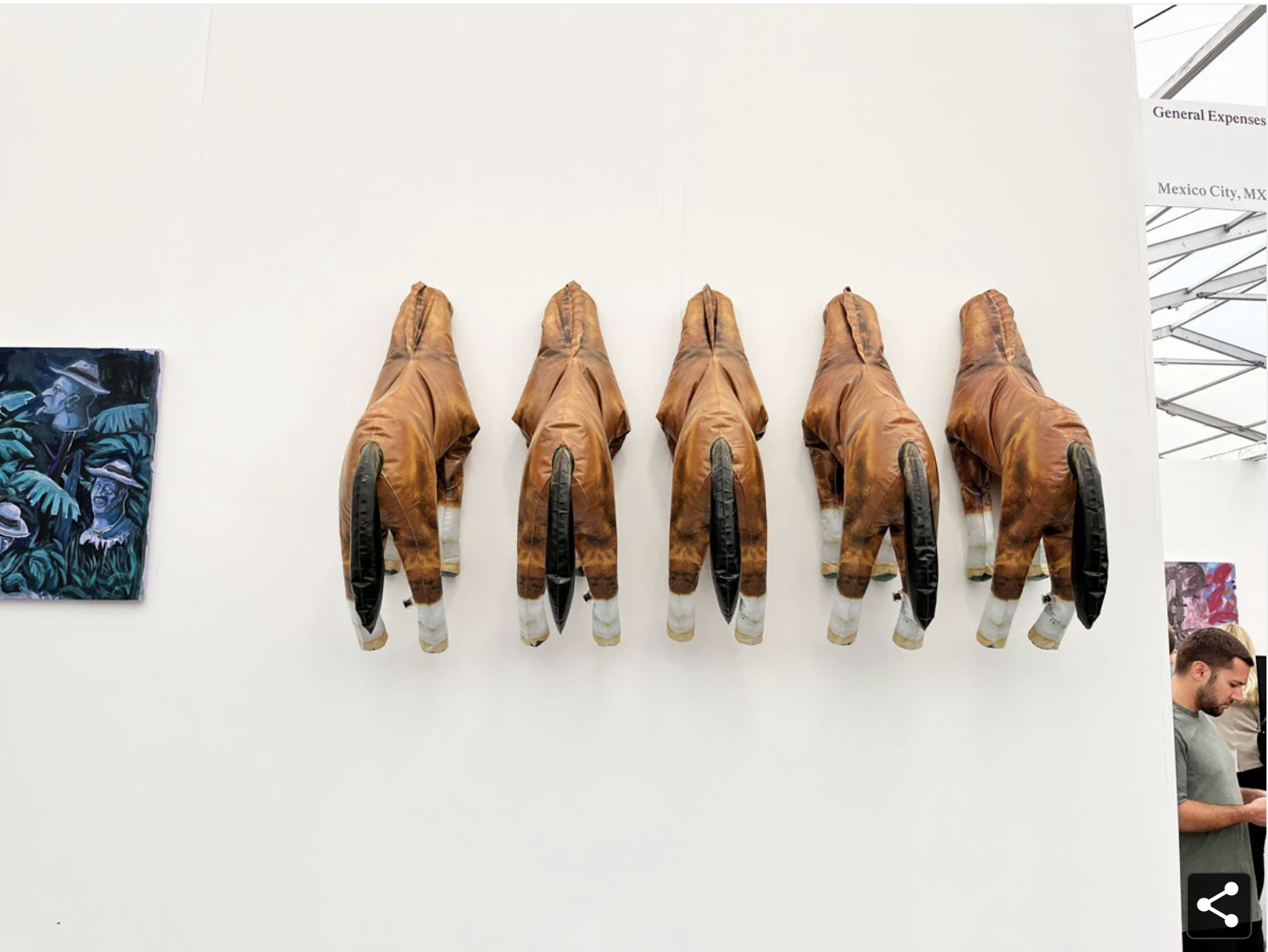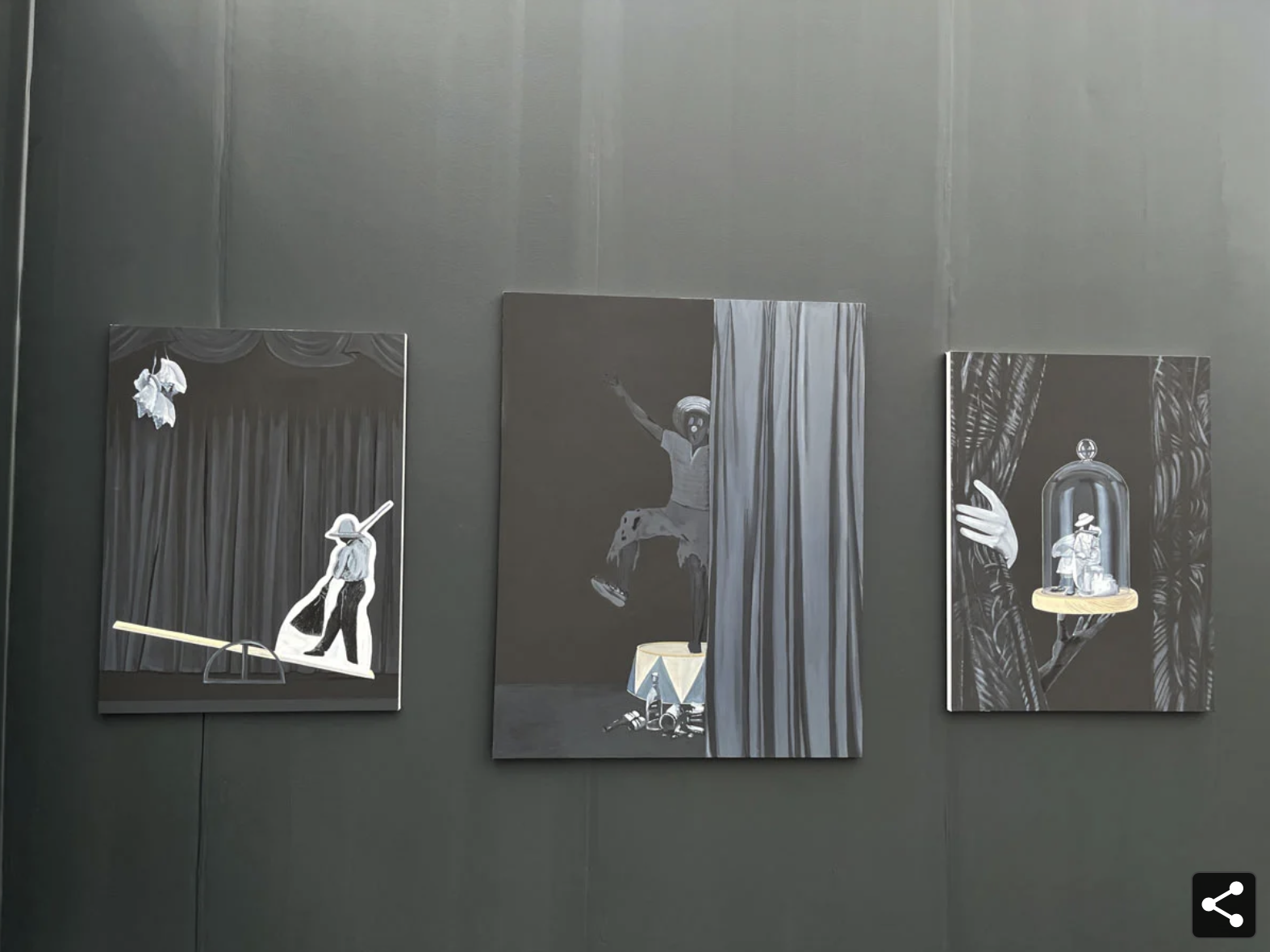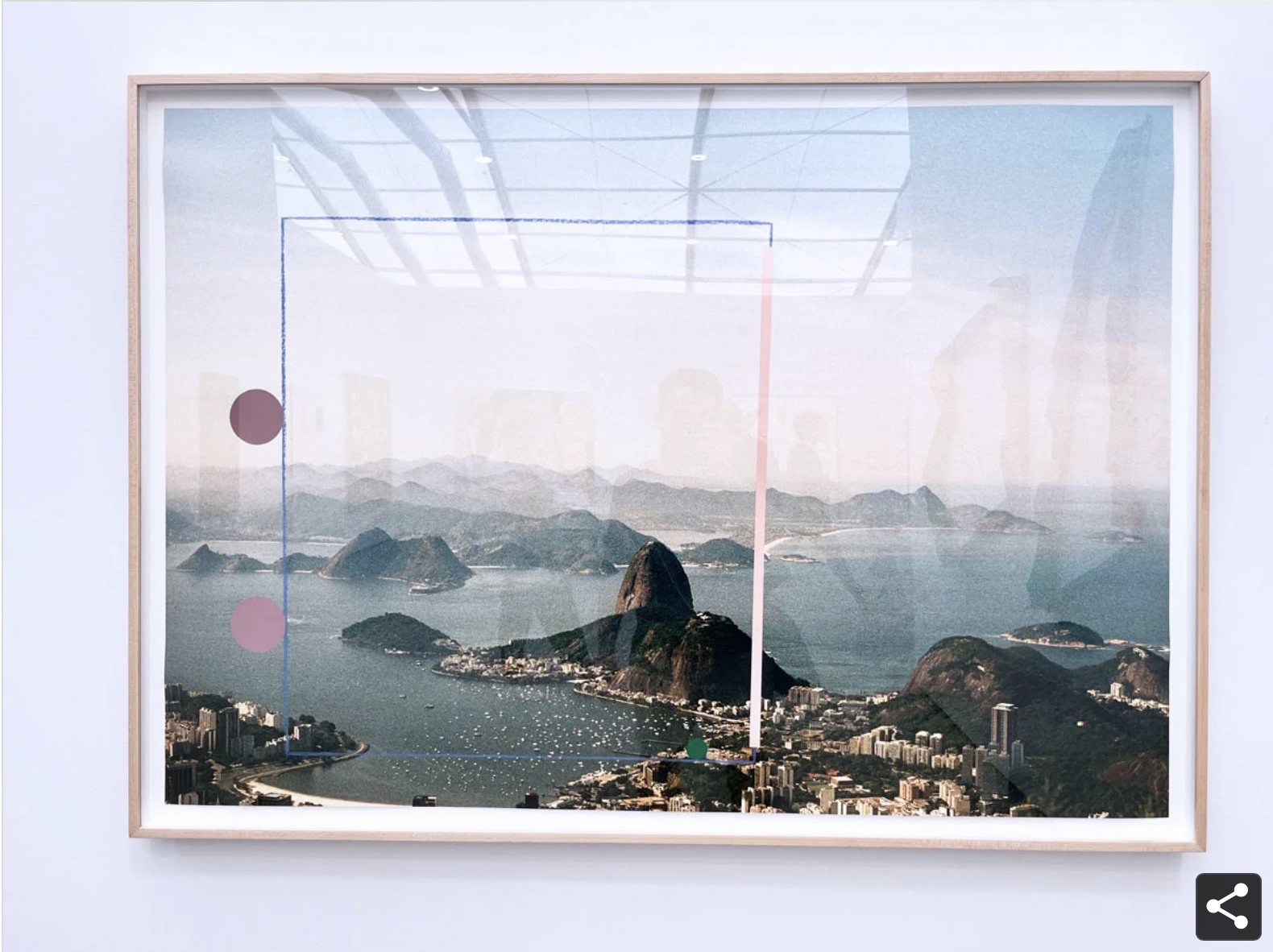November 29, 2022 10:43am
On Monday afternoon, the day before the first preview for the massive Art Basel Miami Beach, Untitled Miami brought together more than 140 galleries in a tent on the white sands of Miami Beach.
Held on an exceptionally warm 85-degree day, the preview was sweltering. But that didn’t deter visitors who were buzzing around the aisles within the first two hours. Several dealers reported selling out their booths by the end of the first day.
Below, a look at some of the best art on offer at the fair.
Juan Uribe at SGR Galería
Photo : Maximilíano Durón/ARTnews
Works critiquing the art market at a fair can often fall flat—the irony typically supersedes the message. That’s not the case with a new body of work by Juan Uribe, who has previously critiqued the art world in other works. Six examples from a 15-work series are on view in the booth Bogotá’s SGR Galería; each measures 64 by 44 inches. These works, composed of hand-painted black text on a gray canvas, are hung tightly, consuming a small wall.
In Meaningless, Uribe parodies how artists and movements become associated with a signature motif: “NEON MEANS NAUMAN / EGGS MEAN FISCHER / CIGARETTES MEAN LUCAS / GUN SHOTS MEAN BURDEN / BLOOD MEANS VIENNESE ACTIONISM / …” In another work, titled Dear Collectors, Uribe directly addresses potential buyers, writing, “I know a different version of the art you bought exists in your minds because you own it. I believe, just like Andy, that good business is the best art, and that making money is art. … I know some of you collect with your eyes, others with your ears but always with your wallets. And I know you will love this painting because you all love a good portrait.”
Marek Wolfryd at General Expenses
Photo : Maximilíano Durón/ARTnews
Another presentation at Untitled that directly references art history and the circulation of consumer goods comes via Marek Wolfryd. The five half-inflated horses’ backsides hung to the wall of General Expenses’ booth are a clear reference to Jannis Kounellis’s Untitled (12 Horses), in which 12 live horses are installed in a gallery. (The work was famously recreated in 2015 at Gavin Brown’s Enterprise in New York; it is not included in Kounellis’s current Walker Art Center retrospective, however.) The other clear allusion is an untitled 2007 work by Maurizio Cattelan, in which a portion of a taxidermy horse is set into a wall, with a later version expanded to include five such animals. Wolfryd’s horses, then, are two steps removed from Kounellis’s—they’re a simulacrum of a simulacrum. Add to this the fact that Wolfryd’s animals are inflatable horses made in China, a commentary on how ideas and works circulate in a globalized art world.
Drew Weech at Tern Gallery
Photo : Maximilíano Durón/ARTnews
In three stunning paintings, mostly done in shades of black, white, and gray, Drew Weech presents an alternate view of so-called island life. The Bahamian sees his use of black and white as “rebelling” against the typical bright, tropical colors that are typically associated with the Bahamas and other Caribbean islands. In one work, we see a man sweeping on a seesaw; in another, a hand pulls back a curtain showing a person at work on a textile under a bell jar. Weech offers this balancing act to focus on the contrast between “how the Bahamas are presented versus how we identify.” In particular, he’s looking at who has been pushed “front and center to tourists,” he said during the fair’s VIP preview.
Alice Quaresma at Pablo’s Birthday
In two mixed-media paintings, Brazilian artist Alice Quaresma is also thinking through the ways in which paradise is presented. She has blown postcard-like images—a picturesque view of various islands in a harbor, in the case of the work seen above—and made some additions in shades of pink, purple, and blue. By adding these lines, Quaresma creates a frame within a frame, asking us to think about what has been cropped out of this idyllic image and how easily our memories of a place like this can be manipulated.
Diana Fonseca at El Apartamento
To create her fascinating abstractions, Diana Fonseca gathers chips of peeling paint from old buildings from throughout Havana, where she is based. Arranged almost like gradients, the paintings, which are part of her “Degradations” series, point to the numerous overlapping histories and people that make Havana a vibrant city, one that is in constant renewal. She mirrors this formally, piling on various layers of paint until some are represented only by small flecks of color.
Amber Robles-Gordon at Tafeta
Building on two previous bodies of work, both created since the pandemic, With Every Fibre of My Being (2022) by Amber Robles-Gordon presents a visual summary of the ongoing research that the artist has conducted into her identities as an Afro-Latina of Puerto Rican heritage and as a U.S. citizen living in the District of Columbia. The work, installed in a U shape, is made up of dozens of textiles, many of which are stretched over differently sized hoops used in embroidery and needlepoint. There are prints, florals, sheer fabrics, and fragments of the American flag. In other places are small texts that read “Keep Abortion Legal,” “Make Womanhood Legal,” and “Keep Democracy Legal.”
Ben Sanders at Ochi Gallery
In a preview of what the artist will exhibit in his solo show next January at L.A.’s Ochi Gallery, Ben Sanders has on view 10 beguiling canvases. Titled “Post Existence Postcards,” these small works offer imagined landscapes that envision the world after the extinction of humans. These post-Anthropocene views are mostly filled with large floating orbs—one appears to be a red-hot sun—that float over these desolate scenes. They suggest that we are almost at the point of no return in the climate crisis—or that we may even have reached it—and they are as beautiful as they are troubling. These are especially poignant given that Untitled is set on Miami Beach, which could become one of the first places to disappear as water levels continue to rise.







